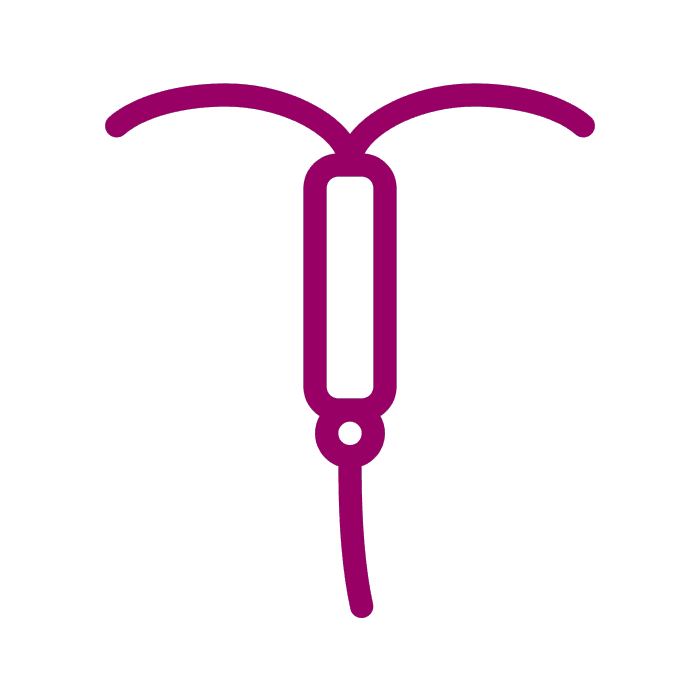
FERTILITY AWARENESS
Other Method
Fertility awareness is the method of only having sex on the non-fertile days of your menstrual cycle.
88 % Effective
Details
Also known as “natural family planning”, fertility awareness is a contraception method of that requires you to monitor and record different fertility signals during your menstrual cycle to work out when the fertile time of her menstrual cycle starts and ends, as it is during this time that you can become pregnant. This method can be used either to avoid pregnancy or to become pregnant.
If you are using the method to avoid falling pregnant, you will need to abstain from sex or use a barrier method when you are at your most fertile. If you are wanting to become pregnant, you would have sex during your most fertile time in your cycle.
If followed correctly, fertility awareness is a very effective method of contraception – but it does take commitment and needs to be followed diligently.
How to
During your menstrual cycle, you will need to be aware of the signs and symptoms of fertility so you can plan or avoid pregnancy. These include the length of your menstrual cycle, your daily temperature, and changes in the mucus of your cervix. Recording these together will give you a more accurate idea of when you are at your most fertile. It is important to know that your fertility signals can be affected by stress, illness and lack of sleep, amongst others.
Pros
It does not involve hormones or chemicals
It is acceptable to all faiths and cultures
It can be used to either become pregnant or avoid pregnancy
Cons
It does not protect against sexually transmitted diseases
If used as a contraceptive method, a barrier method or abstinence is required to avoid pregnancy during your fertile period
It is not effective if not followed accurately
It requires dedication to track your fertility signs every day
Side Effects
There are no known side effects
Frequently Asked Questions
-
Fertility awareness is the method of only having sex on the non-fertile days of your menstrual cycle.
-
Yes. However, the couples must be highly motivated, well-trained in their method, and committed to avoiding unprotected sex during the fertile time.
Are calendar methods reliable?
For many couples, these methods provide reliable information about the fertile days. If the couple avoids vaginal sex or uses condoms, a cervical cap or a diaphragm during the woman’s fertile time, fertility awareness methods can be effective. Using withdrawal or spermicides during the fertile time is less effective and not recommended.
-
For many couples, these methods provide reliable information about the fertile days. If the couple avoids vaginal sex or uses condoms, a cervical cap or a diaphragm during the woman’s fertile time, fertility awareness methods can be effective. Using withdrawal or spermicides during the fertile time is less effective and not recommended.
-
During monthly bleeding the chances of pregnancy are low but not zero. Bleeding itself does not prevent pregnancy, and it does not promote pregnancy, either. In the first several days of monthly bleeding, the chances of pregnancy are lowest. As the days pass, the chances of pregnancy increase, whether or not she is still bleeding. The risk of pregnancy rises until ovulation. The day after ovulation the chances of pregnancy begin to drop steadily. Some fertility awareness methods that depend on cervical secretions advise avoiding unprotected sex during monthly bleeding because cervical secretions cannot be detected during bleeding and there is a small risk of ovulation at this time.
-
As women and their cycles are different, ovulation varies depending on the length of your cycle, which can range from 21 days up to 35 days.
Let’s have a look at two examples:
Ovulation happens about 14 days before your menstruation starts. That means: if your average menstrual cycle for example is 28 days, you ovulate around day 14, and your most fertile days are days 12, 13 and 14. If your average menstrual cycle is 35 days ovulation happens around day 21 and your most fertile days are days 19, 20 and 21. How to count your cycle? The first day of your menstruation is the beginning of a new cycle, hence day 1.
-
The number of days varies based on the woman’s cycle length. The average number of days a woman would be considered fertile and would need to abstain or use another method varies between 12 to 18 days dependent on the fertility awareness tracking methodology. To avoid an unintended pregnancy you must use another contraceptive method, such as condoms, during your fertile days.















CONTRACEPTIVE METHODS
CONTRACEPTIVE METHODS
-

CONTRACEPTIVE IMPLANT
1 or 2 small hormone-releasing silicone rods placed under the skin by a healthcare provider.
-

CONTRACEPTIVE INJECTION
The contraceptive injection is a shot of hormones that lasts for 1 up to 3 months.
-

CONTRACEPTIVE PATCH
A patch that sticks to the skin and releases hormones that are highly effective at stopping pregnancy.
-

CONTRACEPTIVE RING
A flexible plastic ring that is placed in the vagina by the woman and constantly releases hormones.
-

DIAPHRAGM
A diaphragm is a small dome that blocks the entrance to the cervix to stop sperm from entering the womb.
-

EMERGENCY CONTRACEPTIVES
Emergency contraceptives are hormone-based pills that are used in the event of accidental unprotected sex.
-

FEMALE CONDOM
A female condom is a sheath that is placed inside a woman’s vagina before sexual intercourse.
-

INTRAUTERINE DEVICE
An IUD is a small, flexible, often T-shaped device wrapped in copper that is placed inside your womb by your healthcare provider.
-

INTRAUTERINE SYSTEM-IUS
An IUS is a small, flexible, T-shaped system that releases low levels of hormones and is placed inside the womb by your healthcare provider.
-

MALE CONDOM
A condom is a thin film sheath that is placed over a man’s erect penis before having sex.
-

PULL-OUT METHOD
Pulling out (also called Withdrawal Method) requires no additional hormones or devices, just impeccable timing and a lot of luck.
-

SPERMICIDES
Spermicides affect the way sperm travels in the womb making it hard for them to move freely and fertilize an egg.
-

SPONGE
A sponge blocks the entrance to the cervix and releases spermicide, both together stopping sperm from entering the womb and fertilizing an egg.
-

STERILISATION
Sterilisation is the process of completely taking away the body’s ability to reproduce through surgery or minimal invasion.
-

THE PILL
The pill is a small tablet containing hormones that must be swallowed every day, at the same time.



